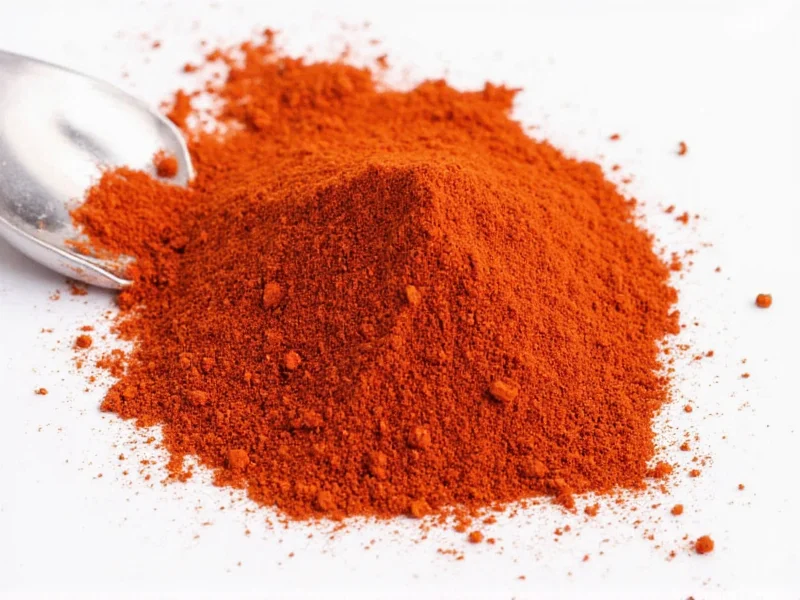When your recipe calls for cayenne pepper but your spice rack is running low, knowing effective alternatives can save your cooking experience. Cayenne pepper, made from dried and ground chili peppers, delivers distinctive heat (30,000-50,000 Scoville units) with subtle fruity notes. Understanding proper substitutions ensures your dishes maintain their intended flavor profile without compromising on spice level.
Understanding Cayenne Pepper Characteristics
Cayenne pepper provides both heat and a slight earthy flavor that enhances many dishes. Its medium-high heat level sits between paprika and habanero peppers on the Scoville scale. When seeking cayenne pepper substitutes in recipes, consider both the heat measurement and flavor profile to maintain your dish's integrity. The ideal replacement depends on whether you need to replicate the heat, the flavor, or both elements of cayenne.
Top Cayenne Pepper Substitutes with Measurements
Not all substitutes work equally well in every application. Here's a detailed comparison of the most reliable alternatives with precise measurements:
| Substitute | Heat Level Comparison | Measurement Ratio | Best For | Flavor Notes |
|---|---|---|---|---|
| Red Pepper Flakes | Similar heat (25,000-30,000 SHU) | 1:1 replacement | Pizza, pasta, sauces | Slightly more textured, similar flavor profile |
| Hot Paprika | Milder (5,000-15,000 SHU) | 1.5x amount of cayenne | Stews, rubs, marinades | Sweeter, less intense heat |
| Chili Powder | Milder (1,000-2,500 SHU) | 2x amount of cayenne | Tacos, chili, Tex-Mex dishes | Contains cumin and garlic, more complex flavor |
| Black Pepper + Pinch Red Pepper | Much milder | 1 tsp black pepper + 1/8 tsp red pepper | Cream sauces, light-colored dishes | Lacks fruitiness but provides gentle heat |
| Hot Sauce | Varies by brand | 1/8 tsp hot sauce per 1/4 tsp cayenne | Wet recipes, soups, sauces | Adds liquid, check ingredients for compatibility |
| Crushed Aleppo Pepper | Milder (10,000 SHU) | 1.5x amount of cayenne | Mediterranean dishes, roasted vegetables | Fruity, slightly tangy with moderate heat |
Special Dietary Considerations for Cayenne Substitutes
For those with specific dietary needs, finding appropriate cayenne pepper alternatives becomes essential. Nightshade-sensitive individuals must avoid traditional substitutes like paprika and chili powder, which come from the same plant family. In these cases, consider:
- Ginger powder - Provides warmth without nightshades (use 1.5x amount)
- Mustard powder - Offers sharp heat (use equal amount)
- Black pepper with horseradish - Creates layered heat (1 tsp black pepper + 1/4 tsp horseradish)
- White pepper - Milder alternative for light-colored dishes
When substituting for cayenne pepper in baking applications, remember that dry spices behave differently than in savory dishes. For spice cakes or gingerbread, consider using a combination of ginger and allspice to mimic cayenne's warmth without overwhelming heat.
Avoiding Common Substitution Mistakes
Many home cooks make critical errors when replacing cayenne pepper that compromise their dishes. The most frequent issues include:
- Overcompensating for heat - Adding too much substitute because it doesn't seem spicy enough initially (heat builds over time)
- Ignoring flavor profiles - Using chili powder in delicate sauces where its additional spices will dominate
- Not adjusting for moisture content - Adding liquid-based substitutes like hot sauce to dry rubs
- Substituting equal volumes without considering potency differences
Professional chefs recommend adding substitute spices gradually, tasting as you go. Remember that heat perception increases as food cooks, so it's better to start with less and add more if needed. For sensitive palates seeking a milder alternative to cayenne pepper, consider using smoked paprika which provides depth without intense heat.
When Substitutes Won't Work
Some recipes rely specifically on cayenne's unique properties that substitutes can't fully replicate. Traditional cayenne-based hot sauces, certain medicinal preparations, and authentic Creole dishes may suffer when substitutions are made. In these cases, consider:
- Adjusting the entire recipe to work with your available spices
- Reducing the overall spice quantity rather than substituting
- Seeking out small quantities of cayenne from specialty stores











 浙公网安备
33010002000092号
浙公网安备
33010002000092号 浙B2-20120091-4
浙B2-20120091-4